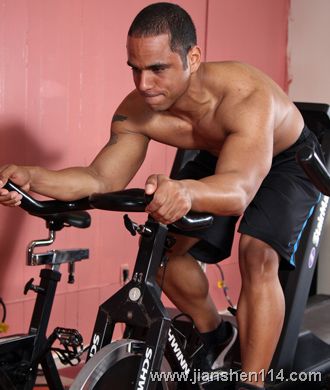Kalari Payat - Quest of Ancient Indian Martial Arts
In a martial art hall in Calicut, southwestern India, a traditional Indian martial arts (Calari Payat) performer is demonstrating stick art. China and India have a long history of interactions in spiritual and material civilization. In addition to language, literature, philosophy, technology, etc., the two countries also have deep roots in martial arts. In a martial art hall in Calicut, southwestern India, two martial arts performers are performing daggers under the guidance of a mentor. They each hold a sword in their hands. One side quickly attacked and the other side agile. The swordsman strikes and the sparks splash. The intense performance made the people watching the scene unable to hold their breath. They practiced the traditional Indian martial arts - Kalari Payat. Callari refers to a semi-underground training hall. It is usually 12 meters long and 6 meters wide. The floor is covered with soft red mud, and the surrounding walls are covered with eighteen weapons. There are wooden daggers, long sticks, spears, metal shields, daggers and sabre. Carriage Paya refers to training in such a place. In a martial art hall in Calicut, southwestern India, Indian traditional martial arts (Calari Payat) performers are practicing soft swords. According to the head Sunil introduction of martial arts, Kalaripayattu is an ancient martial art form originated in Kerala. It has been produced and developed along with the historical process of Indian society and has a history of nearly 2,000 years. “This ancient martial art existed as early as the 4th century AD. Historians believe that this is the origin of many martial arts. It has been recorded that in ancient times, Buddhist monks and Hindus learned this martial art to defend themselves.†Sunil said that with the deepening of cultural exchanges between ancient India and neighboring countries, Kalaripatat spread to Asian neighbors via Indian monks, blended with local martial arts, and derived many new forms. “An Indian monk once traveled to China and other neighboring countries to spread the Dharma. He also brought this skill for self-defense and physical fitness to the local. This martial arts merged with local martial arts and developed into a new form. "" In a martial art hall in Calicut, southwestern India, Indian traditional martial arts (Calari Payat) performers show off the stick. Sunil said that like Chinese Kung Fu, Indian martial arts also pay attention to both internal and external training, seeking a balance between the body and the heart. The martial arts usually start from the age of seven. There are three stages to go from beginner to learner: the freehand stage, the wooden weapon stage, and the metal weapon stage. This process generally takes ten years or even decades. In addition, Indian martial arts also pay attention to respect the teacher. At the beginning of the training, the students must first touch the feet. Ancient historical origins and similar educational concepts have made India and China more frequent in the field of martial arts. Sunil’s martial arts team has visited China’s Shaolin Temple for study and exchange. Many of them also participated in the filming of Chinese kung fu star Jackie Chan. In a martial art hall in Calicut, southwestern India, Indian traditional martial arts (Calari Payat) performers showcase their body flexibility. The martial arts instructor Anil has exchanged with Chinese counterparts many times. He said: "I have had many cooperations with the Shaolin Wushu Group of China. I also performed at Shaolin Temple two years ago. Kalari Payat and Shaolin Kungfu is very similar in terms of movement and footwork, but differs in the type of weapon." Through exchanges, Indian martial arts advocates have found that Chinese traditional martial arts have a high penetration rate and international popularity. They hope that Kalari Payat can be as well known as Chinese Kung Fu and inherit the traditional Indian culture. The head of the martial arts hall, Sunil, said, "Chinese Kung Fu is developing very well and is well known to the world. Its popularity is also very fast. By contrast, only a few people know about Kalari Payat. We are doing performances, Participate in film production and other ways to promote it." Shoe cabinets keep footwear neat, tidy and out of sight. Fold-down cabinet doors open to reveal organized shoe racks and close to create a polished appearance.Save time to search for shoes by organizing your collection in one dedicated storage space. The easy track shoe tower keeps up to 15 pairs of shoes and boots in order, up off the floor, and stored neatly in one place so they`re easy to find and put away. Slanted shelves help shoes stay visible, while chrome fences keep them in place. Four of the five shelves are adjustable, so you can move them up or down easily to make room for different types of shoes or boots. The tower is easy to assemble and can be set on the floor or hung on a heavy-duty steel rail to keep floor space open underneath for additional storage. Shoe Rack,Shoe Storage,Shoe Organizer,Wooden Shoe Rack,Storage Cabinet,Shoe Bench FuJian YuanFu Import&Export Trading Co., Ltd. , https://www.fjyffurnitures.com


